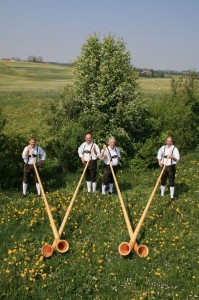Musik,-Takt & Tonlehre
BOCK AUF KULTUR
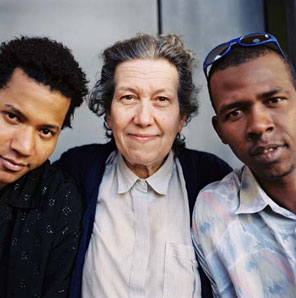
Ute Bock – Austria
Ute Bock worked professionally for many years as a social worker and educator/teacher, before she became director of the Zohmanngasse Home in Vienna in 1976.. In the early 1990s, she started to take care of teenage immigrants. She also took in underage refugees from countries at war, who came to Austria on their own looking for asylum. Ute Bock was the last hope for many teenage immigrants for whom nobody else cared. Her small project has grown into a community of 50 apartments where over 200 people find a home. She has also provided a legal address and legal aid for more than 1000 immigrants so that they can pursue their asylum procedures.
She was born in Linz, Austria in 1942.
In the early 1990s, Ute Bock started to take care of teenage immigrants, who were sent to her by the youth welfare office. At first, they were mostly children of immigrant workers. But soon enough she also took in underage immigrants from countries at war, who came to Austria on their own looking for asylum. Zohmanngasse and Ute Bock were the last hope for many teenage immigrants for whom nobody else cared.
Any time a social or immigrant worker was at a loss, the teenagers were sent to Ute. At Zohmanngasse no youth was turned down, no matter where he or she came from. And when she ran out of space, Ute Bock organized and financed flat-sharing apartments for communal living.
During a police raid in September 1999 at her home, 30 youngsters and young adults from Africa were arrested on grounds of suspected drug dealing. Ute Bock was accused of dealing with drugs and supporting gangs. She was briefly suspended from her job. While the indictment and suspension were lifted, Ute Bock was not allowed to shelter African immigrants at her home any longer.
Ute Bock has won numerous awards for her social commitment. She was given the United Nations Refugee Agency (UNHCR) Refugee Award in 2000, the Bruno Kreisky Award for Human Rights in 2002, the Dr. Karl Renner Award in 2003, the Humanity Award by the Red Cross and the Spin the Globe Award from Siemens Austria in 2004.
Ute Bock retired in August 2000 and since then she has been working full time taking care of African immigrants, who like to call her ‘Mama Africa’. Her original small project has grown into a community of 50 apartments, where over 200 people find a home. Apart from this, she has provided a legal address and legal aid for more than a thousand immigrants, so that they can pursue their asylum procedures.
Ute Bock has been financing her project with her own pension, her savings, financial awards and donations.
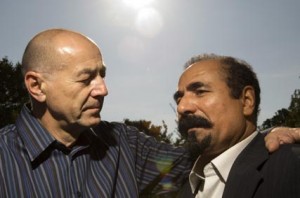
> VEREIN KETANI < > VEREIN ROMA <
WILLI RESETARITS, Founder of Integrationshaus
Wilhelm Resetarits (born 21 December 1948 in Stinatz, Austria), better known as > Willi Resetarits < and Dr. Kurt Ostbahn, is an Austrian singer, comedian and human rights activist.
Resetarits was born in the Austrian state Burgenland, but his family moved to Vienna when he was three. He studied sports and English studies intending to become a teacher, but his successful career as a musician intervened.
Resetarits is a human rights activist and one of the founders of the humanitarian organisations Asyl in Not and SOS Mitmensch. He is also one of the founders and chairman of the Integration House Vienna.
He has made frequent appearances on Austrian TV and in film productions.
Lukas Resetarits (cabaret artist and actor on TV) and Peter Resetarits (TV host at ORF) are his brothers. Karin Resetarits, a present member of the European Parliament, is his divorced sister-in-law.
> Meet Ute Bock, Bock auf Kultur, Friends at facebook <
> Meet Gitans, Gitanos, Gipsys, Zingari, Roma, Sintis …Friends at fb <
ANBU – Helping Children in Need
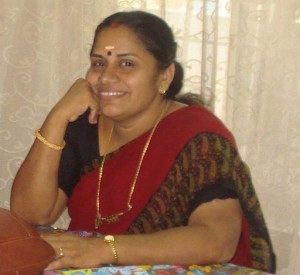
POEMS FROM MRS. SANTHI KRISHNAN
The director/conductor of the Organistation Raghavan, is in Arunachalapuram in south India, Tamilnadu and in the environment on the way and tried, so many humans, those by emergency, divorce, separation, accident or other one to help. He partly gets references from the population, which is guessed/advised humans in emergency. Then it intervenes: Anbu Trust is a legal organization. Raghavan, must deliver each year a report to the state and let its finances examine. What at donations by sponsorships, sponsors and other funds with it arrive, also really go to humans, who need it urgently. It supports much humans and children.
This is the FCRA, which one needs in India, in order to make a Non Profit Organization official, these places we gladly for the order, as a check.
Here at Anbu Trust we search for anyone who is willing to help with small monthly donations which is used in emergency situation. We are not looking for a great sum of money, but only which you can afford to give.
Only you can determine how much you can afford to give, every dollar, rupee, Euro, paso, what ever it is that you can give, counts and gives hope and the the dawn of another day for those in need. IT provides for many another day of food or medicine in which they would not recieve without our help. Each of us all over the world, whether in Germany, America, Russia, India, China or anywhere in the world, can be stricken by illness, unemployment or any emergency situation. We ask that if you can, to please help us and God by helping his children in need. Many of our friends in Bollywood have accepted a sponsorship or have given a donation. Some donate or help with clothes, shoes, toys or school supplies. They also give us ideas on how we can help more. For all we are grateful!
In several Bollywood forums, we have made wonderful friends, who help Raghavan and those in need in Tamilnadu.
Since the tsunami hit this area, it brought death an destruction and sickeness and hunger to many, only we can help them to recover and get a sense of life back to their existance. We adjust here on this web page everything, so that all everywhere can see what we work so hard to accomplish. All that you donate you will be able to see and that it is going to where it is intended to be. Our team works in vain, and we want no payment, or take money for any thing that is needed. We give everything from private funds. The cost of packages that are sent are privately paid for by the person sending them. We dispatch all the gifts to the children at our own expense also, so only the complete amount of donations go to the children and families in need.
You will be able to see where your donations are going and how they are helping those in need. You may also get picutes and from time to time and maybe a letter from those you are sponsoring. Any question you ever have will always be answered to the best of our ability and someone will always be available. We take great pride in helping those who need us and we get back so much just by seeing a smile.
Meet ANBU Trust – helping children in need at facebook <
Meet Bollywood Groups, Friends at facebook <
TABLA – Sree Debasish Dass (Pintoo)
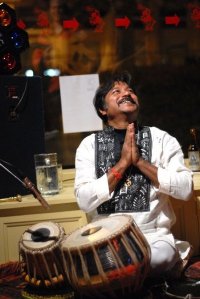
The tabla (Hindi: तबला, Bangla: তবলা, Urdu: تبلہ tablÄ� from Arabic: طبل، طبلة tabl, tabla) is a popular Indian percussion instrument used in the classical, popular and religious music of the Indian subcontinent and in Hindustani classical music. The instrument consists of a pair of hand drums of contrasting sizes and timbres. The term tabla is derived from an Arabic word, tabl, which simply means „drum.“Playing technique involves extensive use of the fingers and palms in various configurations to create a wide variety of different sounds, reflected in the mnemonic syllables (bol). The heel of the hand is used to apply pressure or in a sliding motion on the larger drum so that the pitch is changed during the sound’s decay.
Sree Debasish Dass (Pintoo) Born in a very tradtional musical familly on May day, Sree Debasish Dass has carved a special niche for himself in the world of Tabla, the king of Indian percussion instruments. He was initiated into Tabla at the tender age of five by his beloved father Late Dilip Kumar Pandit a highly acclaimed Tabla player of Farukkabad Gharana.
True to his date of birth, which symbolises sincere labour, Debasish (popularly known as Pintoo) put in years of relentless effort and unfailing dedication to master the art of playing Tabla. He completed his graduation from the world famous Visva-Bharati University founded by the great Rabindra Nath Tagore.
Thereafter he plunged fully into the subtle complexities Tabla and completed his Diploma in music, Bachelor and Master degree in Tabla. And there after; Late Pandit Dilip Kumar Das too our family to Satiniketan where he joind in the world famous University there as a professor.
When ever I come to Europe I feel there is a great need for the elderly people who needs care…….. So I have dream to start a place where my spiritual family members will come during the winter and stay with me….. Where there will be somepeople who will take care of them and there will be Yoga and music every day……… there will be a place where they will walk and walk with self esteem too. I do not know how but I feel I must do this….. because I have got much from them…..
DIE VEDEN & AYURVEDA, EIN ÜBERBLICK
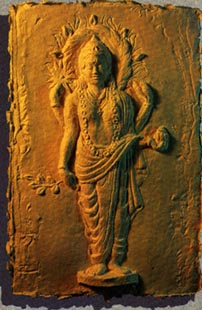
> CHARAKA SCHOOL OF AYURVEDA <
> AYURVEDA & CHARAKA SAMHITA <
>> Books from „Kenneth G. Zysk“ <<
Ayurveda (DevanÄ�garÄ�: आयुर्वेद, the ’science of life‘) is a system of traditional medicine native to India and practiced in other parts of the world as a form of alternative medicine. In Sanskrit, the word Ayurveda consists of the words Ä�yus, meaning ‚life‘, and veda, meaning ‚related to knowledge‘ or ’science‘. Evolving throughout its history, Ayurveda remains an influential system of medicine in South Asia. The earliest literature of Ayurveda appeared during the Vedic period in India. The Sushruta Samhita and the Charaka Samhita were influential works on traditional medicine during this era. Ayurvedic practitioners also identified a number of medicinal preparations and surgical procedures for curing various ailments and diseases. Ayurveda traces its origins to the Vedas—the Atharvaveda in particular—and is connected to Hindu religion.The Sushruta Samhita of Sushruta appeared during the 1st millennium BC.
Ayurveda, Rishis, die 4 VEDEN (Rgveda, Samaveda, Yajurveda, Arthavaveda) und deren Entstehung:
Der Begriff Ä�yurveda ist ein Wort aus dem Sanskrit, der altindischen Hochsprache, und heißt einfach übersetzt „Wissenschaft vom Leben“ oder „Wissen von der Lebensspanne“. Durch diese Bezeichnung versteht sich, dass im Ä�yurveda nicht nur Krankheiten behandelt werden. Als „Wissenschaft vom Leben“ hat Ä�yurveda ein zweifaches Ziel.
> Dein Ayurveda Net ….. “ Ayurveda “ <
> Meet Pentavox Herbals, Ayurveda (Biggest Ayurveda Group on fb) <
> Meet many Ayurveda Groups and Friends at facebook <
> Meet Dhanvanthari Groups and Friends at facebook <
> Meet NaturalNews.com at facebook <
NaturalNews.com is an independent news resource that covers the natural health and wellness topics that empower individuals to make positive changes in their personal health. NaturalNews offers uncensored news that allows for healthier choice.
RADHA ANJALI – BHARATANATYAM
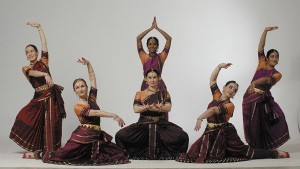
Verein für indische Kunst & Kultur in Wien
“yato hastas tato drstir, yato drstis tato manah, yato manas tato bhavo,yato bhavas tato rasah“ – Abhinayadarpana, Vers 37, Nandikesvara . Wo die Hände sind/sich hinbewegen dort ist der Blick, wo der Blick ist, ist der Geist,wo der Geist ist, ist das Gefühl, wo das Gefühl ist, ist (entsteht) Rasa.
Bharatanatyam (Tamil: பரதநாட்டியம்) is a classical Indian dance form originating in Tamil Nadu[1][2][3][4][5], now in India. This dance form denotes various 19th and 20th century reconstructions of Cathir, the art of temple dancers. Cathir in turn, is derived from ancient dance forms. Bharatanatyam is usually accompanied by the classical music. It has its inspirations from the sculptures of the ancient temple of Chidambaram. Bharatanatyam, as the name depicts is the combination of:
BHA- Bhava (Expression), RA- Raga (Music) and TA- Tala (Rhythm) Bharatanatyam is a traditional dance-form known for its grace, purity, tenderness, and sculpturesque poses. Today, it is one of the most popular and widely performed dance styles and is practiced by male and female dancers all over India.
Usefull Links & Information:
-
Bharatanatyam, Laya-Yoga & Meditation by Dr. phil. Angela-Petra Saber-Zaimian (Radha Anjali) : > Körperlichkeit & indische Philosophie in (laya) Yoga & Bharatanatyam <
-
Alexandra Romanova was trained in ballet at the National School of Ballet in Warsaw, studied indology at Warsaw University and was awarded scholarship to learn Bharata Natyam dance in India. She spent years being trained by Yamini Krishnamurti, in New Delhi. www.alexromanova.com
> Dein Ayurveda Net….. > Bharatanatyam <
> Meet Bharatanatyam Group at facebook <
LATE MANGESHKAR – BOLLYWOOD
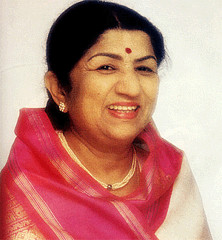
Lata Mangeshkar (Marathi: लता मंगेशकर; born September 28, 1929) is a singer from India. She is one of the best-known playback singers in the Hindi film industry. Mangeshkar’s career started in 1942 and has spanned over six and a half decades. She sang in over a thousand Bollywood movies and has sung songs in over twenty regional Indian languages, but primarily in Hindi. She is the elder sister of the equally accomplished singer Asha Bhosle and lesser-known singers, brother Hridayanath Mangeshkar and sisters Usha Mangeshkar and Meena Mangeshkar. Lata is the second vocalist ever to have received the Bharat Ratna, India’s highest civilian honour.
Mangeshkar was featured in the Guiness Book of World Records from 1974 to 1991 for having made the most recordings in the world. The claim was that she had recorded no less than 25,000 solo, duet, and chorus-backed songs in 20 Indian languages between 1948 to 1974 (30,000 songs between 1948 and 1987, according to the 1987 edition). Over the years, while several sources have supported this claim, others have raised concerns over its veracity, claiming that this number was highly exaggerated and that Mangeshkar’s sister, Asha Bhosle, had more song recordings than she had.
Bollywood (Hindi: बॉलीवुड) is the informal term popularly used for the Hindi-language film industry based in Mumbai, India. The term is often incorrectly used to refer to the whole of Indian cinema; it is only a part of the Indian film industry. >> Bollywood << is the largest film producer in India and one of the largest centers of film production in the world.
The name is a portmanteau of Bombay (the former name for Mumbai) and Hollywood, the center of the American film industry.
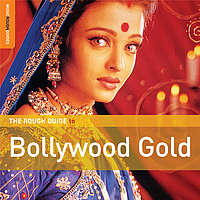
Bollywood is more properly referred to as Hindi cinema, though frequent use of poetic Urdu words is fairly common. There has been a growing presence of Indian English in dialogue and songs as well. It is not uncommon to see films that feature dialogue with English words and phrases, or even whole sentences.
> Meet Late Mangeshkar Fans at facebook <
THE ARTS OF HARISH JOHARI
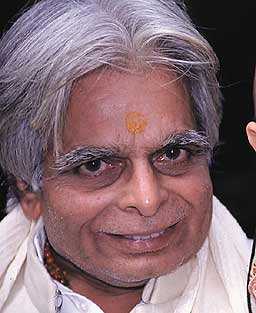
> HARISH´s AYURVEDA BOOKS & ARTS <
Harish Johari (1934-1999) was a distinguished North Indian author, Tantric scholar, poet,musician, composer, artist, and gemologist who held degrees in philosophy and literature and made it his life’s work to introduce the culture of his homeland to the West.
Breath, Mind, and Consciousness
YOGA, by the puplisher
Modern scientists are just now beginning to understand what yogis have known for centuries–that the life force animating our physical bodies is regulated by breath, and that the breath energy is controlled by the mind. The esoteric and practical science of Swar Yoga >–presented in this book for the first time in English–< teaches conscious observation and control of breathing patterns to maximize energy and vitality.
Tantric Scholar and author of Tools for Tantra, Chakras, and The Healing Power of Gemstones, HARISH JOHARI brings an in-depth knowledge of ancient Hindu sciences to this discussion of breath and the yoga of balanced living.
His is the first guidebook for Westerners to offer a comprehensive treatment of the subject, providing information from Sanskrit texts otherwise unavailable in the English Language. He explains the sensory network of the nose and its effect on the subtle channels of energy throughout the body, showing the direct link between the practice of conscious breathing and the electrochemical balance of the brain and nervous system. He also shows how the breath, alternating between left and right nostrils, is influenced by solar and lunar forces and how one can attune to these natural rhythms and universal laws for greater health and well-being.
SWARA YOGA, the ancient art of breathing
Johari’s mastery of > Swara Yoga < techniques is apparent in the broad scope of Breath, Mind and Consciousness: included are a discussion of the phases of the five elements in the breathing cycle, exercises for physical and psychic healing, the means for determining which nostril is active, and instructions for conceiving a son or a daughter.
While continuing his lifetime study and practice of tantra, HARISH JOHARI is a painter, sculptor, gemologist, and composer of Indian music.
The word SWARA in Sanskrit, means sound or musical note; it also means the continuous flow of air through one nostril. And we all know that YOGA means union. So Swara Yoga is the science which is about the realization of cosmic consciousness, through the awareness or observation, then control or manipulation of the flow of breath in the nostrils.
Swara yoga is an ancient tantric science which involves the systematic study of the breath flow through the nostrils (or swara) in relation to the prevailing phases of the moon, time of day and direction . Although we think of ‚pranayama‘ when we think of techniques associated with the breath, in Swara yoga, it is the association of the breath in relation to the activities or phases or positions of the sun, moon, planets, seasons, time of day, with the physical and mental conditions of the individual and then taking the appropriate action according to these subtle relations. For example, knowing the moon phases and checking the flow of your nostrils before you get out of bed in the morning and letting the corresponding foot be the first to touch the floor and make the first step, is a simple practice that ensures success in everything that happens for that day. The first foot to touch the ground will get the prevailing ’successful‘ flow of energy from the cosmos.
> Meet SWARA Group at facebook <
> Meet over 200 Frida Kahlo Groups and Frida Kahlo Fans (184.298) <
BHAJANS – Lieder der Freude und Liebe !
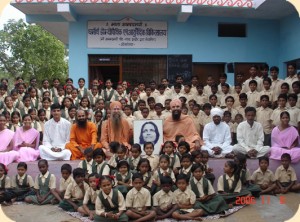
Plattform für indische Musik und Tanz in Österreich
> Bhakti Sangeet – Benefiz-Liederabend <
> School Project, Omkareshvar <
Mit Swami Mangalananda, Swami Gurusharanananda, Captain, Christian Weiss
Sa., 10.10.2009, 18:00 – 21:00, Yoga Zentrum Ganesha, 1090 Wien, Alserbachstrasse 2
Di., 13.10.2009, 19:30 – 22:00, „Gsunde Stubn“ 3500 Krems, Tel: 0676 3264219
Sa., 17.10. 2009, 18:00 – 21:00, Zentrum „Agartha“, 3100 St. Pölten, Mühlweg 16
So., 18.102099, 14:00 – 18:00, bei DDDr. Franz Langmayer, 1150 Wien Langmaisgasse 7
Swami Mangalananda und Swami Gurusharanananda leben im bedeutenden Pilgerort Omkareshwar im indischen Bundesstaat Madhya Pradesh und haben dort die einzige Schule des Gebiets (www.danamudra.org) aufgebaut. Die beiden sind auch exzellente Musiker und reisen nun das dritte Jahr in den Westen, um zu singen und ihre Aktivitäten bekannt zu machen. Diesmal treten sie auch im einzigartigen „Bockkeller“ – dem zauberhaften Spiegelsaal des Wiener Volksliedwerks – auf.
Sie bieten ein buntes Programm mit Liedern aus verschiedenen Traditionen Indiens mit authentischen Musikinstrumenten. Ihr ältester Schüler Captain begleitet sie mit einer Dholak-Trommel, Unterstützung gibt es auch wieder durch Christian Weiss mit seiner Tabla. – Kaum jemand kann sich der Lebensfreude dieser Musik entziehen. Zwischen den Liedern erzählen die Mönche amüsante und lehrreiche Anekdoten von indischen Weisen und es werden auch berührende Bilder aus ihrer Gegend gezeigt und Fragen über die Schule und ihre Aktivitäten beantwortet.
Traditionelle Indische Bhajans und Kirtans – Das ist jubelnde Liebe zum göttlichen Aspekt des Seins. Zwei Möche eines indischen Klasters (Omkareshwar/Narmada in Madhya Pradesh), beide grossardige und hingebungsvolle Musiker und Sänger, kommen nach dem grossen Erfolg ihrer beiden Europatourneen wieder nach Österreich, um ihre Freude am Gesang mit uns zu teilen.
ZITAT > DAVE STRINGER < : …“ Kirtan ist ein wertvoller Teil des Yoga. Das Wort Kirtan (sanskrit) bedeutet „singen“. Die gesungenen Texte sind kurze, einfache Mantras in Sanskrit und werden gut lesbar auf eine Wand projiziert. Sanskrit ist eine besondere Sprache; sie besteht aus den reinsten, klarsten und konzentriertesten Lauten, die die menschliche Stimme er-zeugen kann….“ INTERVIEW mit David Stringer im > YOGA AKTUELL <
Swami Mangalananda stammt aus einer amerkikanischen Musikerfamilie und ist seit dreissig Jahren Möch, Swami Gurusharananda ist der junge indische Direktor der Schule, die DANA MUDRA seit 2005 unterstützt. Die beiden werden uns auch über den spirtituellen Hintergrund der Lieder informieren. Ein berührender neuer Film über den alten Pilgerort Omkareshwar, seine Kinder und die dort von den Mönchen betriebenen Schule wird ebenfalls gezeigt. Für die muskiklische Begleitung sorgen das indische Harmonium und Tabla.
Der Erlös der Veranstaltungen ist für den Ausbau und den Betrieb der Schule bestimmt, die das Kloster in dieser entlegenen, armen Gegend errichtet hat. Damit sollen möglichst viele Kinder die Chance bekommen, aus dem Kreislauf der Armut auszubrechen.
Wie in den vergangen Jahren werden Swami Gurusharananda und Swami Mangalananda uns auch heuer wieder mit mitreissenden und inspirierenden Bhajans begeistern!
Der Eintritt ist frei, großzügige Spenden sind erbeten.
DANA MUDRA – “ Die gebende Hand “ ist die Geste, mit der in der indischen und tibetischen Kunst manche Gottheiten und Buddhas dargestellt werden. Ist das nicht ein schöner Name für eine Vereinigung, die das Geben, das Teilen auf Ihre Fahnen geschrieben hat ? www.danamudra.org
VIENNA PHILHARMONIC CONCERT TOUR

Concert Tour with Zubin Mehta and Franz Welser-Möst
Residency in the Middle Kingdom.Beijing is the destination of the tour Claudio Abbado and the LUCERNE FESTIVAL ORCHESTRA will undertake in September 2009.
The > Vienna Philharmonic < embarks on a 25 day concert tour including 15 concerts in Europe and Asia in September 2009.
After making appearances at the Lucerne Festival and the BBC-Proms, the orchestra flies to Japan for the 14th Vienna Philharmonic Week in Japan, from September 15th to 25th. Concerts in Shanghai and Seoul make up the last stops on the tour. Zubin Mehta, who already traveled once around the globe with the Philharmonic this spring, will conduct 13 of the 15 concerts. The designated Musical Director of the Vienna State Opera, Franz Welser-Möst, will conduct one concert each in Lucerne and London.
NADA YOGA AND PHILOSOPHY
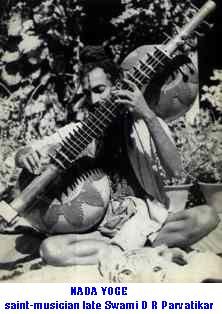
NADA YOGA AND PHILOSOPHY
Indian music has its essence in a deep sense of spirituality along with roots in Yoga and Indian philosophy. The theme of the compositions is mostly devotional in nature, and many of them also convey abstruse philosophical concepts in a form that is easy to grasp. Music itself, when practised with commitment, is also a form of Yoga. Music has a tremendous effect on the mental state of human beings as it results in peace, concentration, relaxation, spiritual elevation etc, which are the principles of Yoga and meditation. The practice of Yoga techniques, such as breath control and mental concentration, are also closely allied to the study of instrument vocal music.
According to Hindu philosophy, the word for pure sound is Nada Brahma. Nada has also been described by some as the energy of Brahma and it is believed that the propitiation of Nada leads to the attainment of Moksha (salvation), which is the ultimate goal of human life. Matanga has described Nada in his Brihaddesi thus:
„There is no song or music without Nada, there are no musical notes without Nada, there is no dance without Nada and the world is filled with the essence of Nada“.
The word Nada refers to the physical, the mystic and the religious or the cosmic sound. The sound that is produced by musical instruments is an object of sensory perception, as it is grasped by the sense of hearing. This is called Ahata Nada. In this context, the human voice is also a musical instrument. As described by Dr Acharya Trigunateet Jaimini in the composition, Sobhillu Saptaswara, the entire body, including the abdomen (Nabhi), heart (Hrt), neck (Kantha), mouth (Rasana) and nasal passages (Nasa), aids in the production of the sound.
MIRABAI- Poet, Saint & Bhakti-Tradition
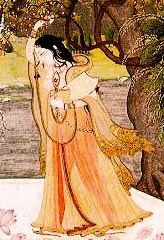
Die Verse der indischen Dichterin und Mystikerin
> Mirabai < (Devanagari मीराबाई, MÄ�rÄ�bÄ�Ä�; * um 1498; † 1546) war eine indische Mystikerin und Dichterin. Sie ist nicht nur wegen ihrer eigenwilligen Persönlichkeit eine höchst faszinierende Frauengestalt der Religionsgeschichte. Ihre ganz persönlich gehaltenen ekstatischen Liebes-, Preis- und Klagelieder sind durch die Jahrhunderte lebendig geblieben und werden noch heute auf dem indischen Subkontinent von Hindus, Sikhs, Muslimen und Christen gleichermaßen rezitiert, gesungen und von den indischen Radiostationen ausgestrahlt. Es gibt zahlreiche Buchausgaben sowie CDs mit Vertonungen der Lieder und Mirabais Leben ist Gegenstand eines Spielfilms. Ihre Verse gehören zum Schatz der Weltliteratur und stehen neben denen der Dichter-Mystiker Hafis, Rumi, > Kabir (satguru, 99 Names of Allah < und > Hildegard von Bingen <.
Perhaps the most remembered and quoted woman in India history is a sixteenth century poet, singer and saint called Mirabai, or Meera. Versions of her songs are sung today all over India, and she appears as a subject in films, books, dances, plays and paintings. Even Mohandas Gandhi promoted her, seeing Mira as a symbol of a woman who has the right to chose her own path, forsake a life of luxury, and in nonviolent resistance find liberation.
YOGALEHRER IM HINDUISMUS
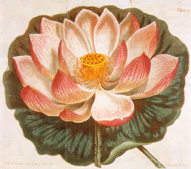
YOGALEHRER IN INDIEN
oder: “ YOGI in INDIEN „
Mit insgesamt 390 Versen stellt die Yoga-Shikha („Krone des Yoga“)-Upanishad die umfassendste Yoga-Upanishad dar. Sie besteht aus sechs Kapiteln, deren letztes einmal eine selbstständige Abhandlung gewesen zu sein scheint. Dieses > Shaiva-Werk < soll, ähnlich wie die > TANTRAS <, den spirituellen Suchern dienen, die mit den Schwierigkeiten des dunklen Zeitalters (kali-yuga) zu kämpfen haben.
Acharya Trigunateet Jaimini Jaimini
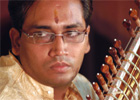
classical music according traditional system of gurukul parampara,
social services & music theraphy
> Making Indian classical music for fashion shows <
Dr. Acharya Trigunateet Jaimini is fortunate to have earned this rare accolade and shares “ Born in classic family of musicians“. Child Jaimini was trained up by his devoted musician mother who accompanied him on Tabla at an early age .This led him to giving successful stage performances of Sitar at the age of three.
He has since then making his own compositions on the spot in various“Raagas“ and „Taals“. His first T.V. programme -classical performance on Sitar relayed from Delhi Doordarshan (National ) Program at an early age of ten years. In the similar age his Sitar performance in Shri Swami Haridas Sangit Samaroh Vrindaban (the National Music Concert was appreciated by senior Top Artists. In the National Concert of Hindustani and Karnatak music organised by Shri Raghvendra Swami Mission Bangalore it was remarkable at the age of eleven years that he played „Dhrupad“ on Dattatreya Veena which is exhibited in Sangit Natak Academy Museum New Delhi India and now listed as rare instrument in the Limca Book of Records.
Grand Tradition & the Search for Unity
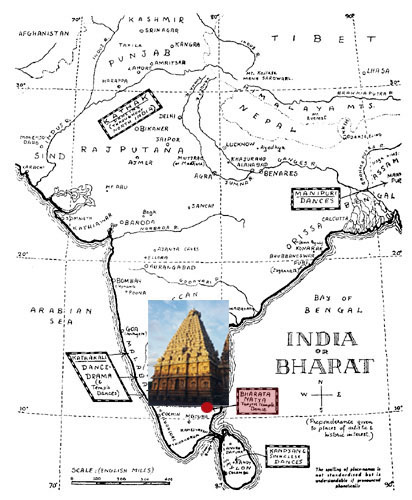
*sanskrit ducoments – natya sastra*
> The Nâtya Sâstra and its Grand Tradition <
Mârkandeya said: Lord of men, he who does not know properly the rules of chitra can, by no means, be able to discern the characteristics of image. . . . Without a knowledge of the art of dancing, the rules of painting are very difficult to be understood. . . . The practice of dancing is difficult to be understood by one who is not acquainted with music. . . . without singing music cannot be understood. –Vishnudharmottara
> The Search for Unity: the Goal of Indian Aesthetics <
> Priyadarshi Patnaik: An Overview of Indian Aesthetics <
Introduction
Indian aesthetics is a vast field. Any attempt to discuss it in such a brief space as this can only be sketchy and deal with the broad tendencies. Hence, here I have only attempted to give its brief overview with reference to major trends. I begin with a few queries about the term “Indian Aesthetics” in the light of our Western orientation. Next I attempt to look at the grand text of Indian aesthetics–Nâtya Sâstra–and briefly discuss its contribution to an understanding of various art forms. From that point onwards, the focus is on Indian aesthetics with special focus on poetics, its important concepts and commentators – since many of the aesthetic issues dealt with in poetics are significant to dance, music, painting and sculpture. I manage only to touch upon a few points about other art forms; and neglect dance in the process. This is partly due to my orientation in poetics and partly due to my ignorance. But I hope that this brief discussion will encourage others to rectify this shortcoming and extend the discussion of Indian aesthetics in a more balanced and integrated manner.
Traditional Music Instruments – Sound & Yoga
> Prof. Armin Rosins Alphornseite <
> Yoga-sūtras of Patañjali with the Exposition of VyÄ�sa: <
SÄ�dhana-pÄ�da Von Patañjali, Swami Veda Bharati, VyÄ�sa, Usharbudh Arya, >Vorwort v. Georg Feuerstein<
„…A different object presented to a concetrated mind become the cause of its deviation, altering it to a state of attraction (raga), and so forth, as happened in the case of sage, Mrkandu, who heard the fifth note on a flute, opened his eyes from samadhi, saw the beautiful nymph (apsaras) named pramloka and became enamoured of her, like rice grains, are initially hard, but softened by fire…“ .
